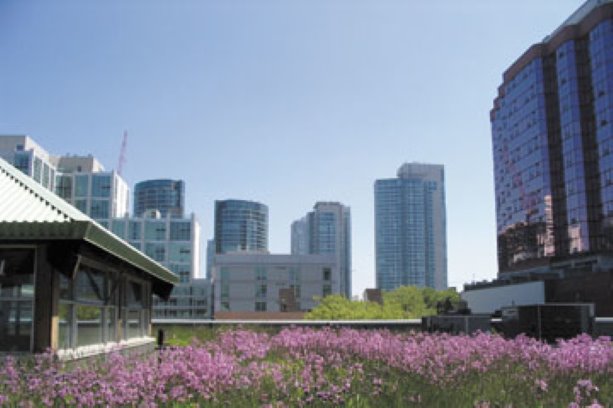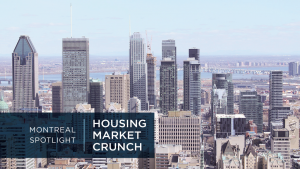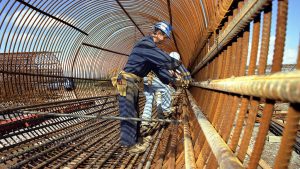“I don’t believe that the insurance industry has caught up with the increased risk of fire that may result from improperly maintained green roofs,” says Don Marks, executive director of the Ontario Industrial Roofing Contractors Association.
Insurance
California brush fires frequently make the news as they destroy homes and businesses. Supposing a brush fire occurs on top of a downtown highrise?
“I don’t believe that the insurance industry has caught up with the increased risk of fire that may result from improperly maintained green roofs,” says Don Marks, executive director of the Ontario Industrial Roofing Contractors Association.
“Green roofing brings along with it a whole new set of maintenance needs. It’s difficult enough to keep a lawn and garden green during a dry spell. What are the requirements for green roofs in terms of watering, irrigation and weeding? For traditional roofs, the typical attitude is ‘out of sight, out of mind.’ ”
Canadians frequently look to the European experience with green roofing for guidance on such matters.
In the case of insurance, however, the details are far from settled. Last year, Swiss insurance giant Zurich expressed concern that green roofs might dry out and become flammable. Stuart Blackie, a risk management consultant at Zurich’s U.K. arm says that insurers should be part of the green roof design process, so that consideration can be given to irrigation, maintenance, firebreaks and restricted roof access to discourage arson.
While the company continues to insure buildings with green roofs, Blackie noted in a 2006 report that: “The issue of fire spread, combustibility and indeed fire safety are often overlooked.”
“I don’t believe that the issue has been dealt with adequately in Toronto,” says Marks.
“Under the City of Toronto Act, the province in effect gave the city permission to bypass the Ontario Building Code (OBC) to allow them to build green roofs, and to pass a by-law that would make it mandatory.
“For a conventional building, the OBC is very specific about how you build a roof according to referenced standards, but it doesn’t address green roofs or green roofing systems.
“From what source does the Toronto Green Roof Construction Standard (TGRCS) derive its fire safety considerations?”
The City of Toronto passed its Green Roof By-Law in May, requiring a green roof component for all new residential, commercial and institutional building permit applications made after Jan. 31, 2010 and for all new industrial development applications made after Jan. 31, 2011.
The need to address issues of fire safety was raised in the Report from the Chair of the Toronto Green Roof Technical Advisory Group (TAG), published in March 2009. The Report notes that “<0x2026>the TAG considered the matter of fire safety at two of its meetings. As the draft TGRCS identifies, there is no widely accepted testing method developed for Green Roofs.”
The Single Ply Roofing Industry and the American National Standards Institute have been working jointly to craft a Fire Design Guide for green roofs.
The report recommends that the Chief Building Official should reconvene the TAG following completion of the fire safety standard to… “review its applicability to Toronto, compatibility with the requirements of the Ontario Building Code and potential updating of the Toronto Green Roof Construction Standard.
In the interim, the TGRCS should contain requirements for breaks in vegetation to mitigate fire spread.”
Marks says, however, that green roofs built to the Toronto construction standard won’t be able to pass Underwriters Laboratories of Canada’s CAN/ULC S107-03, Methods of Fire Tests of Roof Coverings. “Under the flame-spread test, they shoot a flame across the top of a traditional roofing membrane,” says Marks. “There isn’t one green roof that will pass that test — the vegetation will burn, and the City of Toronto has been aware of this.”
Marks notes that the insurance sector is generally reactive to emerging issues, not proactive.
“The insurance industry hasn’t caught up with this yet,” he says. “They may need to experience some losses and claims before clueing in.”
Related Comments











Recent Comments
comments for this post are closed